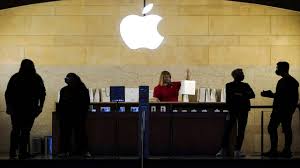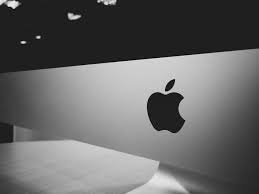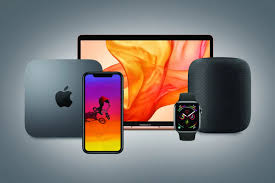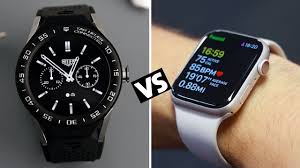 Apple, once the undisputed leader in tech innovation, has recently faced criticism for its slower pace of groundbreaking releases. While competitors race ahead with foldable phones, AI integrations, and revolutionary designs, Apple appears to be playing it safe. This in-depth analysis uncovers the real reasons behind Apple’s cautious innovation strategy and whether it signals trouble or tactical brilliance for the tech giant.
Apple, once the undisputed leader in tech innovation, has recently faced criticism for its slower pace of groundbreaking releases. While competitors race ahead with foldable phones, AI integrations, and revolutionary designs, Apple appears to be playing it safe. This in-depth analysis uncovers the real reasons behind Apple’s cautious innovation strategy and whether it signals trouble or tactical brilliance for the tech giant.
A. The Golden Age of Apple Innovation (2007-2015)
-
Industry-Defining Releases
-
iPhone (2007): Revolutionized smartphones
-
iPad (2010): Created the tablet market
-
Apple Watch (2015): Pioneered wearables
-
-
Key Innovation Drivers
-
Steve Jobs’ “next big thing” philosophy
-
Willingness to cannibalize existing products
-
Aggressive R&D investment (5% of revenue)
-
-
Market Impact
-
Consistent stock price growth
-
Cult-like brand loyalty development
-
Competitor catch-up periods of 2-3 years
-
B. The Visible Slowdown (2016-Present)
1. Incremental Updates Dominating
-
iPhone: Minor camera bumps and chip upgrades
-
Mac: Spec bumps rather than redesigns
-
iPad: Confusing lineup with marginal improvements
2. Missed Market Opportunities
-
Foldable phones (Samsung’s 4-year lead)
-
AI assistants (lagging behind Google/Samsung)
-
AR/VR (late entry with Vision Pro)
3. Competitor Comparison
-
Samsung’s foldable and flip phone varieties
-
Google’s AI-first hardware approach
-
Huawei’s camera and battery innovations
C. The Hidden Strategy Behind Apple’s Caution
-
Supply Chain Perfectionism
-
Refusal to release unpolished products
-
Manufacturing scalability requirements
-
Component standardization needs
-
-
Ecosystem Lock-In Focus
-
Services revenue growth (19% YoY)
-
Cross-device integration priorities
-
Subscription model emphasis
-
-
Risk Management Approach
-
Protecting $300B+ brand value
-
Avoiding PR disasters (Note7 recall lesson)
-
Waiting for market validation before entering
-
-
Regulatory Considerations
-
Antitrust scrutiny avoidance
-
Right-to-repair compliance transitions
-
Global manufacturing diversification
-
D. Financial Realities Driving Decisions
| Metric | 2015 | 2023 |
|---|---|---|
| R&D Spending | $8.1B | $29.9B |
| R&D % of Revenue | 3.3% | 7.7% |
| Most Expensive Project | iPhone ($150M) | Car Project ($10B+) |
| Service Revenue | $19.9B | $85.2B |

E. Behind-the-Scenes Innovation Areas
-
Silicon Development
-
M-series chip revolution
-
Custom 5G modems in development
-
Neural engine advancements
-
-
Health Tech Push
-
Non-invasive glucose monitoring
-
Blood pressure sensing
-
FDA clearance strategies
-
-
AR/VR Long Game
-
Vision Pro as developer platform
-
10-year roadmap for AR glasses
-
Spatial computing ecosystem
-
F. Consumer Impact: Good or Bad?
Pros of Cautious Approach
-
More stable software experience
-
Longer device support (5+ years)
-
Better privacy protections
Cons of Slow Innovation
-
Stagnant design language
-
Premium pricing without breakthroughs
-
Enthusiast frustration
G. The Road Ahead: Apple’s Innovation Pipeline
-
2024-2025 Expected Releases
-
Foldable iPad prototypes
-
Apple Car decision point
-
AI-powered Siri overhaul
-
-
Long-Term Bets
-
Home robotics research
-
MicroLED display transition
-
Quantum computing initiatives
-
-
Market Correction Possibilities
-
Shareholder pressure for bold moves
-
New leadership directions
-
Disruptive competitor threats
-

Conclusion
Apple’s apparent innovation slowdown masks a strategic shift from revolutionary products to ecosystem depth and behind-the-scenes technological foundations. While this approach sacrifices short-term wow factor, it builds long-term stability and service revenue streams. The coming years will prove whether this calculated patience pays off or leaves Apple vulnerable to more agile competitors. One thing remains certain – in tech, standing still is the most dangerous move of all.














